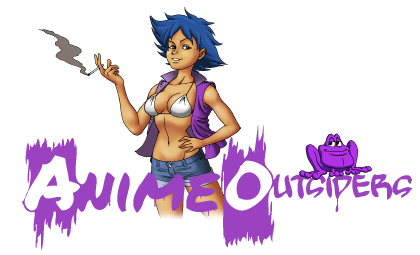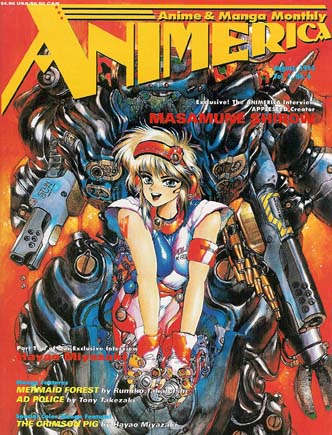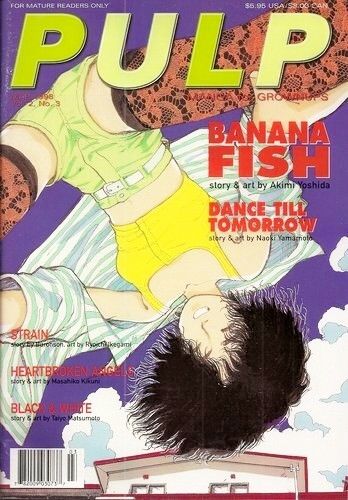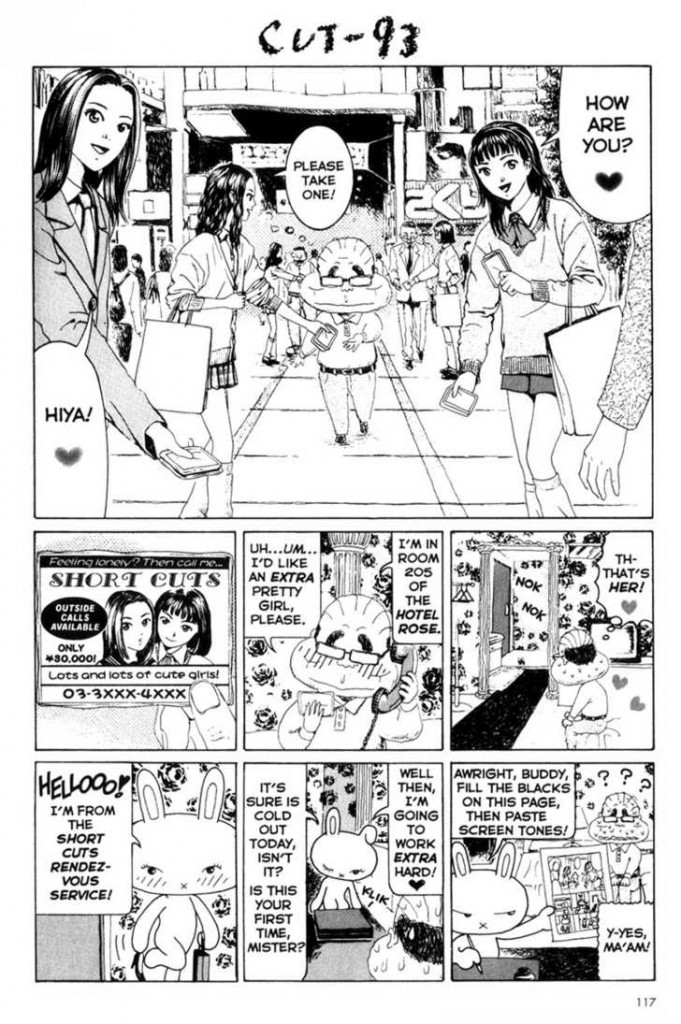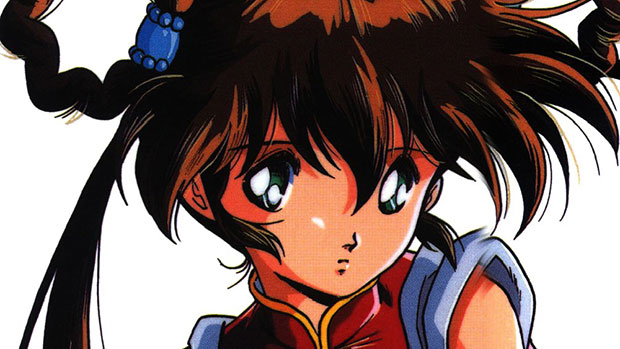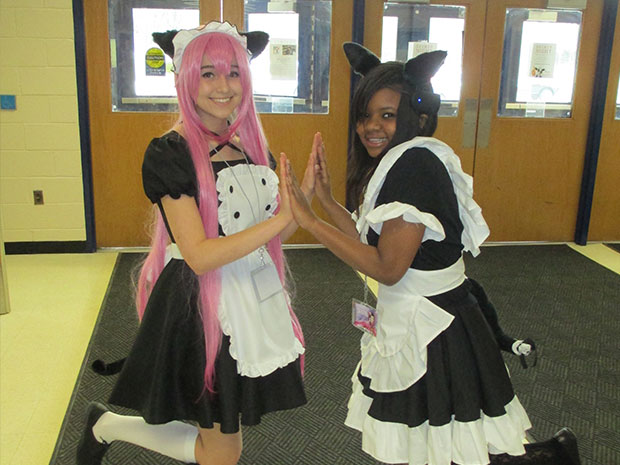Dean Talks Anime
The Best Anime Magazine You Never Read: PULP
A review/opinion by Christopher Kinsey
I’m going to say I miss magazines. Unlike comic books, magazines now of days are a piece of media that can be completely obliterated by the internet. Any information you would get from a specialist magazine can be completely ignored for press releases from any website for any company you’d ever want. And if you’re just looking for craft or hobby information, just make an internet search on one and you’ve got enough projects to last eight lifetimes. All the information is at our fingertips, and it’s all for the taking!
So why pay for the privilege? For one, it filtered out the facts from the crap. Instead of having every option at your fingertips the simple refinement of articles made it critical each one was worth your time and money. For another, the accountability of the dollar made at least an attempt at quality a must. If your review magazine was faulty and the personalities grated against the public’s perceptions, you failed. And especially with all these accusations you find on the internet now of days you don’t need to hone your journalism or entertaining writing as long as the clicks pass by.
Which brings me to Viz Media. A company that really opened the gates to the distribution of manga and anime in the moment, they really worked out a great way to produce and license Japanese entertainment with the involvement of the original creators. Before Viz brought their model to marketing Japanese properties, most anime and manga were chopped up and repackaged for an American audience to an extent making a whole new show. This worked sometimes (my example is Robotech), and other times it just sucked away how awesome the original series was (My example is the second version of Voltron).
“Before the internet we paid for the privilege of finding out which anime women we could lust after without being a pedophile.”
After putting out a variety of great, and admittedly not so great, manga and taking VHS by storm with the Ranma 1/2 series; Viz took to making a magazine about anime and manga for the anime fan. The result was Animerica. Released in 1992, it was a scattershot smattering of all things anime. It was very useful because it gave you a mostly complete listing of what was being released form anime and manga distributors along with a helpful description of what it was about. There were some reviews, of course, and they did a pretty good job for the most part. Of course they also had some Manga features. Something licensed by Viz that was worth a try, usually something older too. But the regular articles were a real scattershot. The first one I can remember was a man who explored the Old Testament symbolism of Neon Genesis Evangelion while making cookies that looked like the angels from the series. That was a heavy dose of “OK… where are you going with this?” But there were more articles that discussed a new anime series, an interview with a series creator, a travelogue on a well-known location in Japan used in a lot of anime, or an explanation of cultural folklore that makes up your favorite shows.
There are other anime based magazines in America that were released earlier than this publication (That honor goes to Protoculture Addicts), but Viz’s model of building relationships with the creators gave them pretty much the straightest information and success followed. So they put out a few more magazines building on that success. Animerica Extra was a complete comic anthology which started as a hodge-podge of different manga but shifted to a shojo focus which then turned to the current Shojo Beat. Manga Vizion was another manga anthology which featured series both old and new which encouraged readers to try new titles. Game On! USA was a short lived magazine that featured anime inspired games.
“It was here I learned the glory of Steam Detectives only to have it pushed out to make way for Complicated Boyfriend Romance That Could Be Solved With Honesty #4657”
But my favorite of them all was PULP. This was a magazine aimed at older teens and college kids and it showed. It had an underground, ashcan theme that fit its mission; to show the underground and underside of Japanese culture. There were articles about cult film festivals in Tokyo, a Japanese soapland woman’s diary about the industry, a discussion on Japanese horror comics, a Hunter S. Thompson style look at Tokyo, more interviews with manga counter culture artists, if it was weird and cool PULP wanted you to know anime and manga was more than just big eyes, big robots and big harems.
“Dammit, I hate it when young ladies interrupt my cloud gazing.”
But at heart it was a manga anthology too. They had some really serious, funny, sexy, and just plain weird titles every month.
Bakune Young was one of the weirder ones. Drawn in a very strange style, this series was about a young punk called Bakune who took Japan’s top Yakuza leader hostage in an ancient Japanese castle. He’s portrayed as a complete idiot but very skilled when it comes to violence. Within this crisis other power players try to use the event to their advantage while Bakune plots to use this moment to take over the world. It’s a hard read for sure but just one of the examples of odd PULP wanted to expose us to.
Banana Fish was a gangster thriller in New York City with a heavy homosexual relationship theme. I know the term yaoi is thrown around like so much confetti, but this series balanced relationship against the trauma of rebelling against a mafia organization that practically raised you. Throw in some plots involving stylized drugs and assassination and you have a complete tale rather than the stylized boy hugs and kisses shojo manga is passing off as “stories”. Heck, this series had such a decent plot the readers demanded it complete in Animerica Extra when PULP was finally cancelled.
Benkei in New York is about a Japanese expatriate who runs a small, discreet bar in New York and does fantastic forgeries of artwork in the back. Sure, this makes him money, but he prefers the opportunity to deal vengeance for his clients. This was only seven stories, but possibly my favorite of the serious subjects between the realistic art style and complex tales of revenge.
“Ugh, gross and cute. Hot Topic just had an orgasm shiver.”
Cinderalla… how to talk about this one… If you don’t know who Junko Mizuno is, search for her art now. You are either going to love it or hate it. It’s like Sanrio let their properties mate with the Bratz then let them all get really, really disgusting. As stated, this is just a retelling of Cinderella with zombies. At the time I was interested, then I settled down, got married, had a kid and such which turned my love of irony switch from a nine to a four.
Dance Til Tomorrow was a drama about relationships which would fit quite nicely in a HBO original series. Romance, drama, and tastefully covered sexual scenes with no penetration. Ultimately it was about a college kid with a kind of conditional inheritance where if he got a job and became a productive member of society, he’s set for life. However he prefers to spend his time with the college humor troupe and winds up with a woman in his bed that just will not leave.
“These men could have saved the manga industry. To our shame we failed them…”
Even a Monkey Can Draw Manga is the finest piece of satire about the manga industry ever. Based on the Japanese version of the “…For Dummies” series, EMCDM took you step by step on how to be a successful manga artist with catchphrases, stealing poses, and of course doing everything that’s popular at the moment so you can cash in. A must read for anyone who needs an example of how there is no glamour in the life of an artist.
Heartbroken Angels is a self-depreciative 4koma gag manga with a penchant for dick jokes before dick jokes became one of the internet’s most depreciated currencies. It had a variety of settings and characters and poked fun at a lot of traditional storylines and conventions in normal manga. There was even a great feature they ran where the artist made up new wordless 4koma and the best ones would be ran in the magazine.
Speaking of satire, it didn’t get more cutting than Short Cuts. This particular cannon was aimed at the Ko-Gal culture and the fetishizing of high school girls in Japanese culture. It was funny, sad (In the ‘that’s a touching but sad sentiment’ way. Not the pitiful way), and at times jokes were untranslatable. However, even for the flattest jokes were backed up by some really good art that mixed styles for greatest impact of the joke.
“Usamaru Furuya should have had a lot more of his works translated. We failed him too.”
Strain was a hard boiled thriller through and through. A five dollar fee given to Mayo (Who names their kid Mayo?) means that whomever you name is dead, but when asked to kill the mother of a 12 year old prostitute he finds even a cheap killer has a line. The events that unfold shake up the underworld and the political world of Malaysia. The crisp realistic style gives this story some real bite, and unlike others in this anthology, seems to have more grounding in reality.
When it came to offer up something that held multiple awards here in America, they housed Tekkonkinkreet. I don’t have the best memory for this series, because I got into the magazine just as it ended. However it’s more well known for a pretty well received anime movie that follows a few of the plotlines faithfully, as well as the slightly over the top art style. It is two brothers against the world, and they often have to do things kids should never have to do to survive in a crumbling metropolis that’s overrun with gangsters. It presents them as real kids, and that’s a treat because they could have taken the standard “Kids are superheroes” route most manga follow.
Umuzaki, yes. You probably know the name but you certainly know the creator. Junji Ito’s creations of madness and the bizarre have made him quite popular in Japanese horror circles. It’s never been my sort of thing, but his art does provoke an eerie dread that is necessary for these semi-lovecraftian tales of things man was not meant to know. In this story we are treated to a town being controlled, no, consumed by spirals. I never know what, ultimately, people do to stick around in the obvious danger that has replaced dread in horror so it’s not my bag.
Finally there was the twin punch of Voyeur and Voyeur’s INC. One series feeds into the other as we’re treated to tales of people who are… well frankly being private eyes for the most part. But they get embroiled in some pretty twisted affairs to expose the corruption around them. It has some pretty good writing and the art style gives you a breather from the rather weighty decisions and revelations brought to light. There’s an odd sense of humor to it, and the characters are quite believable. So it’s possible for all the grit of PULP when it came to one of these hard boiled tales it could provoke a sense of fun.
“If my magazine were going belly up, I’d shine the flashlight on the filth and name names too.”
So the articles were good, the manga was good, but one of the best parts was the reviews. They gave a short, critical eye to everything within two or three sentences. They gave no quarter, and acknowledged who would actually enjoy something they didn’t. With such short reviews, they reviewed a lot of material. Where their sister magazines paraded an “any anime is good anime” mentality, PULP slapped that falsehood right out of their mouths. It got even better with the last issue where every writer ran rampant with a theme of “Manga Hell” where the darkest spots on every genre was brought to light. They even showed for the first time, well to American audiences, the rather risqué works of Tezuka which certainly were more surprising than butt machine guns from a robot 10 year old.
PULP was what we needed, a constant eye on the strange, terrible, and secretly wonderful aspects of Japanese pop culture. I most fondly remember being introduced to the great film and novel Battle Royale because they publicized the bitter battle of Japanese censor boards deeming it a very, very unsuitable film for international release. It showed the cracks in the anime fan’s idea of perfect, glorious Nippon. Now we can’t see where we stand as long as the ad money rolls in one click at a time.
“The Hunger Games could go to hell all the way back to the year 2000”
DeanTheAdequate is more than aware of the irony, but if you could kindly load up A3K every day then the ninjas can finally free his family from the basement all kidnapped families go to in popular media. He sure would appreciate it. Oh, and he’s still got the record from most rejections at Newtype USA for these very articles.
